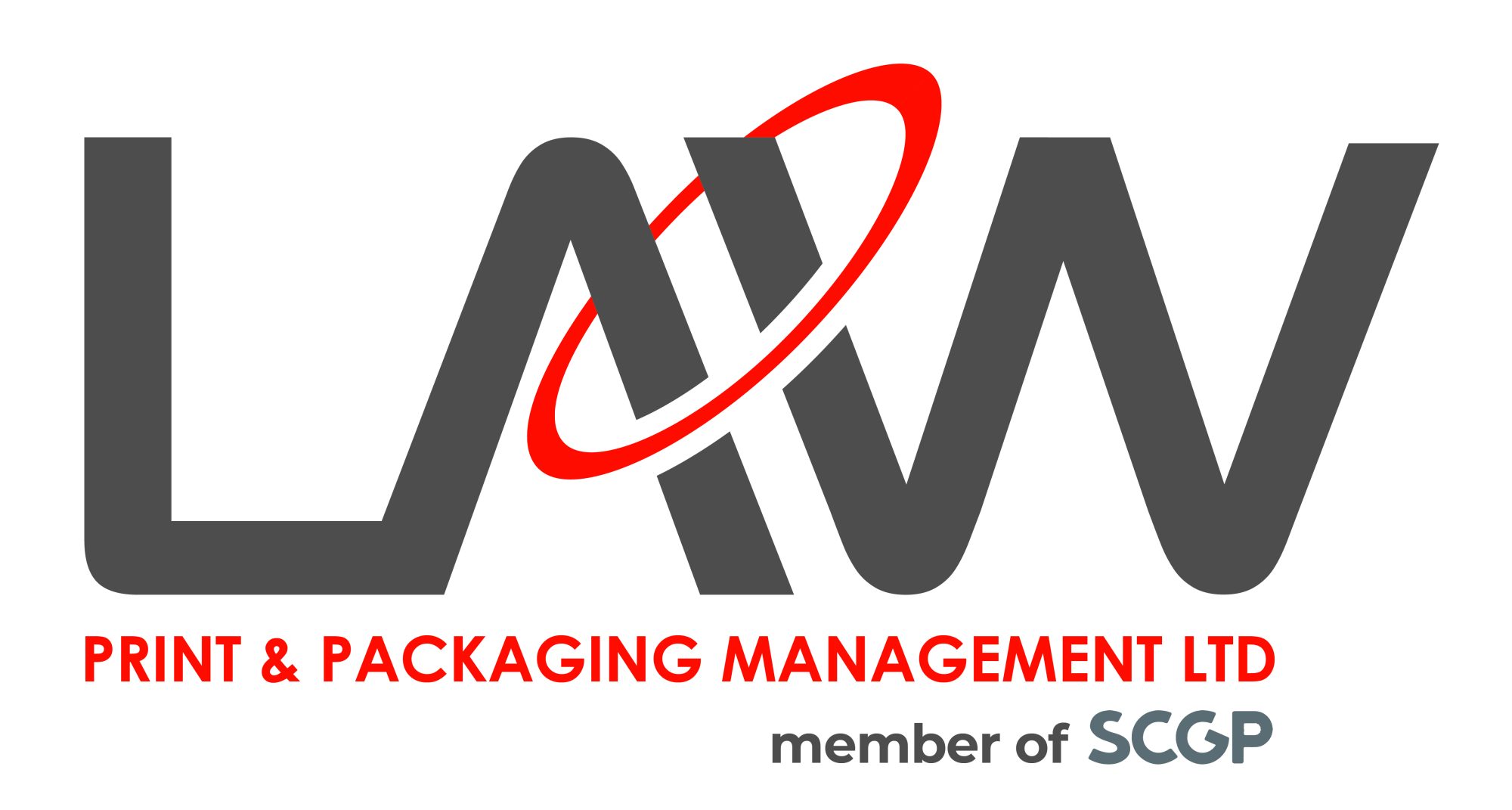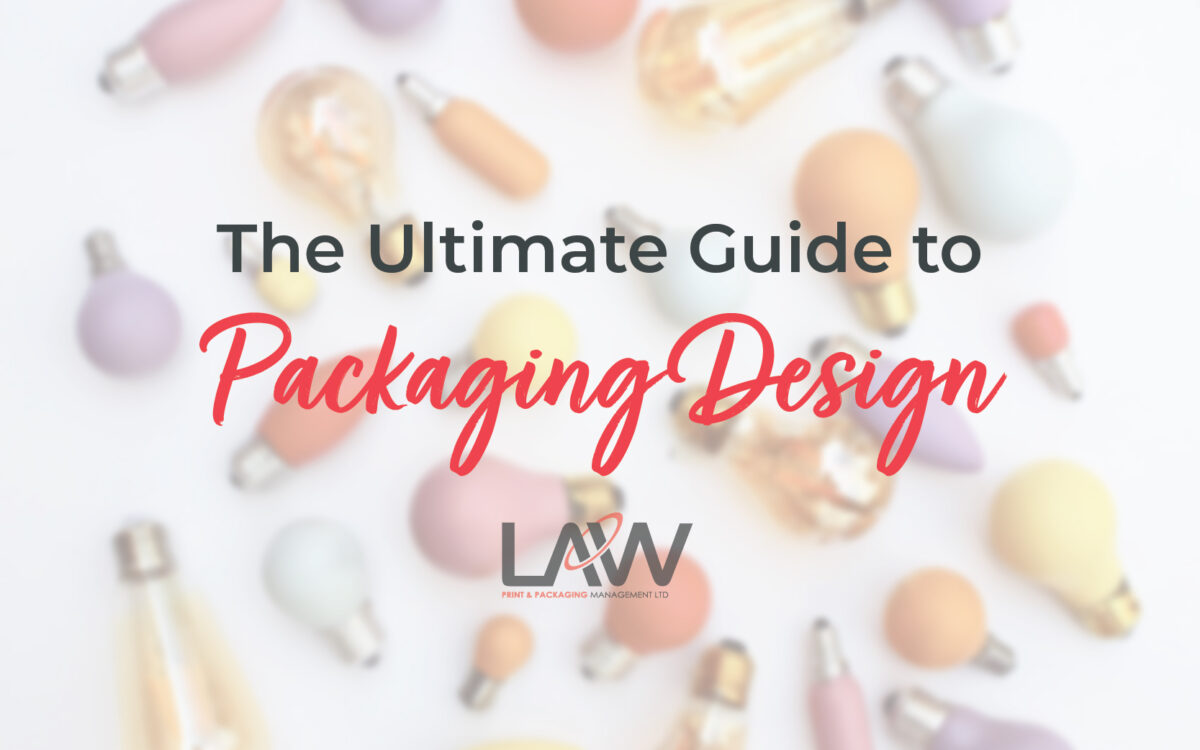Designing your packaging is a feat; we’re not going to lie! So that’s why we’ve put together The Ultimate Guide to Packaging Design.
At Law Print, we can guide our customers throughout the process of Packaging Design, like finding a graphic designer. That bit can be really easy, as our sister company, Digital Creative Packaging (DCP), can speak to you about your Packaging Design artwork ideas and start the ball rolling.
We can then provide information on which material would be required for your product, the sizes that may be best, the quantity, functional features and sustainability.
Getting started
There are a few things you need to be thinking about first:
1. What is the product?
What are you selling? How big is it? What is it made from? Does it need extra protection or an extended shelf life?
This will help you determine if there are any logistical requirements for your product packaging. For example, pet food may require an extra layer to keep it super fresh, depending on the ingredients.
2. Who’s buying the product?
Is the product aimed at pet owners, the health-conscious, and keen gardeners? Who uses it? children or adults? Is it geared towards environmentally conscious people?
A product’s packaging should appeal to its targeted consumer; it’s essential to know who that consumer is before starting this entire process.
Pet food companies have started making a move over to bright packaging, giving a playful aspect to the product. The same goes for confectionery packaging!
3. How are people buying the product?
Are your customers purchasing the product in a supermarket, or do they buy it online?
You will need to think about packaging differently if the product will be sold online and shipped via couriers. You may require sturdier packaging if you send the product across countries.
The Packaging Design Process
Thinking about the actual packaging design will require the below:
- Brand requirements
Sometimes a new product on its own, but in most cases, it’s representing an already established brand. If your packaging needs to describe a particular brand aesthetic, make sure you’ve gathered the following information before you start:
- Colours
If you already have CMYK values or Pantone Matching Values (PMS) colours, include those as they are critical printing specifications.
- Fonts
Make sure you have the correct fonts and any specific usage instructions (like kerning or weight). Providing the files if you have them is all a great help.
- Brand logo
If you put a logo on your packaging, make sure you have a vector file available.
Don’t forget about these!
This is the part you might think is boring, but it’s imperative. What content needs to go on the packaging?
- Packaging labelling
Depending on your industry, there are some things you’re required to put on your packaging for legal reasons. We’ve written a blog about this so head over there for more details.
You may need:
- Written copy
This can include anything from your product’s name to a description of the product itself.
- Imagery
Do you want to have any photos you want to use? You’ll have to have them ready to go before you start the design process. The higher the quality of the image, the better it will print.
- Required labels
Depending on your product/industry, you may be required to include a barcode, nutrition information or association marks. If you’re in the pet food industry, we’ve written a blog about this.
- Know what temporary marks you need
Some products—like food or cosmetics—have additional information that needs to be put on different products’ batches (expiration dates or batch numbers). You shouldn’t print this directly onto your packaging as it will be changing regularly. This should be done at the packing stage only!
Which bag do I need for my product?
Choosing between a pouch and a quad seal bag may seem like a hard decision, but we can help with our expertise! Here are a couple of things you need to think about when selecting the right type of packaging for your product:
The product
Everything always comes back to this! If you are selling something liquid, we can provide spout pouches that can hold alcohol, hand sanitiser, and more with the right material specs.
The competition
Are your competitors stocking their sweets in plastic tubs? Whilst functional, the connotations of plastic may be putting some customers off. You can then head over with your Ready2Recycle pouches and sweep them off their feet! The design of your packaging is the tip of the iceberg!
The budget
Our prices are some of the most competitive in the market. We also have a minimum order quantity, so before you start looking around for prices, you might want to decide the amount you’d need to begin. Plus, some materials can be more expensive than others, so you need to think about this when determining how much money to put aside.
Printing
Connect with a supplier (such as Law Print!) who will give you specific information that can help your designer prepare files.
A couple of things you’ll want to ask about printing is:
Cutter guides
If you’re going with a standard-sized bag or a custom design, your supplier should be able to provide dieline templates that can be shared with a designer.
File requirements
Your printer will need the original vector file. Your designer should supply the print-ready file (usually an Adobe Illustrator (.ai) or high res PDF, with PSD or EPS image files). You might not be able to open these files if you don’t have the right software, but your supplier will be able to.
Colour options
Some printers are going to be able to colour-match to any Pantone colour. Others (especially less-expensive options) will have a limited colour palette for you to work with. Establishing the printing process with your supplier is absolutely crucial as it will determine how many colours you can play with.
Digital vs Flexo or Rotogravure printing
Which process does your printer use? If they print flexo or gravure, what is the minimum order quantity? How do the costs scale? Is digital really better value?
Nearly there!
When everything is drafted, you need to think about the following things to make sure you are prepared and make final adjustments. We can talk you through these if you’re not sure.
Is it clear what your product is?
When you look at your packaging, is it clear what the product does and who it is for? Make sure your packaging doesn’t look like something it shouldn’t!
Is the packaging design an honest representation of your product?
One of the worst things you can do is misrepresent your product in your packaging. Make sure any photos on the packaging are actual photos of the product.
What will this package look like in real life?
Your designer should provide a mock-up of your design, both print-ready (flat) and in three 3-dimensions. You can also create your mock-up by printing it out on white paper and constructing it into the final pack format you have chosen. This will help you see how it looks, and you may spot something that shouldn’t be there.
What will this packaging design look like on-shelf?
When products are lined up next to each other, you will notice that you can usually only see one side of them. Make sure your most important info is front and centre. What will it look like when these products are stacked next to and on top of each other? Is the bottom of the packaging showing? What can you do to make it stand out more?
What will this design look like compared to the competition?
Go to one or more stores where your product will be sold and figure out where your product would be placed. Do most products have one key colour? How will you make yours stand out and get noticed?
Is this packaging reusable or recyclable?
This may not be important for every product, but you may want to consider whether your packaging can be reused. For example, can your bag be reclosed, i.e. can pet treats be stored in the bag? We can also provide Ready2Recycle mono-material bags, which are great for those with eco-conscious consumers.
And finally…
So, after everything is done, are you ready to go? There’s one last thing to check – your files!
- Packaging cutter guides in vector format – This will be an Adobe Illustrator (.ai), .pdf, or .eps file. You will need one for each design of the packaging you are creating (so, if you have three variations, you need three layouts).
- Colour codes – If your printer does custom colours, make sure you have the Pantone references or know the CMYK lab values.
If your brand is looking to invest in quality packaging and packaging design, we will guide you through the entire print process. Providing recommendations along the way to improve efficiency, reduce costs and add untold value to the end product.








